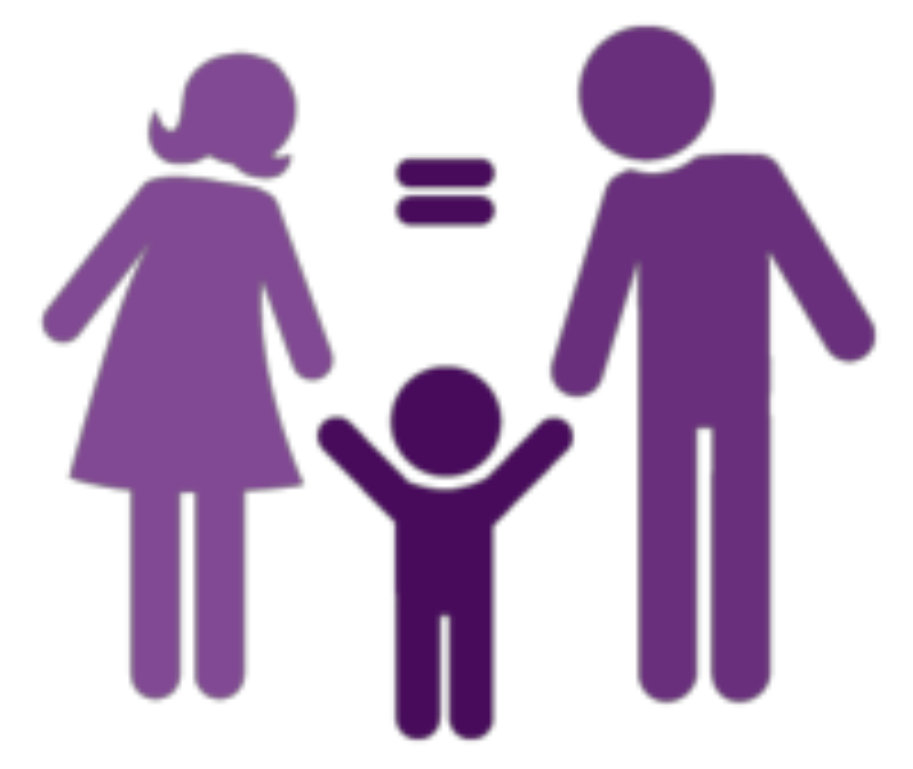SHARON’S CORNER
Hello September! I just love September which is my other favourite month of the year. Beautiful weather, getting back into routines, catching up from summer holidays and not to mention the kids going back to school.
Summer was relaxing but a busy one so stay tuned for something fun I will be sharing soon enough. And don’t worry, no BIG changes with my business planned for this year. Everything has worked out fabulously with downsizing, working from home again and continuing my breast cancer recovery so hopefully you, as clients, are enjoying the changes I’ve made in my business too.
One thing about the summer I can share is that I have written quite a few new blogs so make sure you keep your eyes open for when I release them. And of course, all “old” blogs are always online for you to check out and they often are on those FAQ topics I am asked about all the time.
Have a question? Email or call us. And remember to check out our blogs, checklists and social media pages for more information on all things small business, tax, accounting and the Tri-Cities community.
 SHARED CUSTODY ARRANGEMENTS: Impact Of School Closures
SHARED CUSTODY ARRANGEMENTS: Impact Of School Closures
In an April 21, 2022 Tax Court of Canada case, the Court reviewed whether the taxpayer and her former spouse were shared-custody parents of their three children for the period from January 2019 to June 2021 for the purpose of the Canada child benefit (CCB). In shared-custody arrangements, each individual will get half of the payment they would have received had the child lived with them full time.
While the Minister initially fully paid the CCB to the taxpayer, the Minister later concluded that she and her former spouse were shared-custody parents and that each was entitled to half.
Parents are considered shared-custody parents if they meet three tests:
- they must not be cohabitating spouses or common-law partners;
- they must reside with the child either at least 40% of the time in the month or on an approximately equal basis; and
- they must each primarily fulfil the responsibility for the care and upbringing of the child when the child resides with them.
Taxpayer wins, mostly.
The Court noted that entitlement to CCB is determined on a child-by-child and then month-by-month basis.
The youngest child (V) was not old enough to attend school during the period in question, and therefore, V’s care during the day on weekdays fell entirely to the taxpayer. As such, the former spouse could not meet the 40% test for any months. The taxpayer was entitled to the full CCB in respect of V.
The two other children (N and C) were attending school and reviewed together on a month-by-month basis.
While the Court found that the taxpayer was a shared-custody parent for two time periods (September to November 2019 and January to February 2020), it found that she had full custody for the remaining periods (with full CCB entitlement) as the former spouse did not meet the 40% criteria. The Court provided comments on several periods as follows:
- January to June 2019 – for the three months after the separation, the former spouse had unstable housing, and it was clear he did not meet the 40% test. While there was inconsistent testimony for April to June 2019, the Court found it more likely than not that the former spouse did not meet the 40% test.
- July to August 2019 and 2020 – N and C spent the days during the summer holidays with the taxpayer (and not at school), meaning that the former spouse did not meet the 40% test.
- December 2019 and March 2020 – N and C would not have been at school for a considerable time during these months (Christmas and spring break) and spent this time with the taxpayer, resulting in the former spouse not meeting the 40% test.
- April to June 2020 – the COVID-19 pandemic closed schools, forcing N and C to spend the weekdays with the taxpayer, resulting in the former spouse not meeting the 40% test.
- September 2020 to June 2021 – the taxpayer began homeschooling N and C, resulting in the taxpayer spending all weekdays with N and C. The former spouse did not meet the 40% test.
The Court found that the former spouse met the 40% test for September to November 2019 and January to February 2020 after reviewing the schedules where N and C were at school on the weekdays. The Court also found that the former spouse was primarily responsible for the care and upbringing of N and C when they resided with him. The Court observed that during this period, the former spouse maintained a secure environment for N and C to live with him, that he looked after their hygienic needs and that he provided guidance and companionship. While it was clear that the taxpayer fulfilled more responsibilities than the former spouse, it still found that the former spouse was primarily responsible for N and C when they were with him.
Action: In situations where both parents have partial custody of the children, records of the child’s activities should be kept to support the amount of time spent with each parent.
 POKER PLAYING: Hobby Or Business?
POKER PLAYING: Hobby Or Business?
In a June 21, 2022 French Tax Court of Canada case, CRA assessed the taxpayer’s poker winnings from 2010 to 2012 as business income. In 2010, the taxpayer won almost $9 million in the No Limit Hold'em Championship (The Main Event) at the World Series of Poker. His net winnings that year were about $5 million. In 2011 and 2012, the other two years under review, his net winnings were about $400,000 and $100,000 respectively. These amounts were not in dispute, and details of amounts deducted were not included in the case.
The taxpayer argued that he played poker as a hobby. He cited Paragraph 1.15 of Folio S3-F9-C1 (Lottery Winnings, Miscellaneous Receipts, and Income (and Losses) from Crime) to support his view that his winnings should not be taxable. That document provides the following four factors that would be considered in determining whether gambling was a business:
- the degree of organization;
- special knowledge or inside information that the taxpayer possesses that allows the element of chance to be reduced;
- the intention to gamble for pleasure or as a profitable livelihood; and
- the extent of the gambling activities, including the number and frequency of bets.
After his Main Event win in 2010, PokerStars, an online poker business, engaged him as a spokesperson through a taxable corporation created for this purpose. The taxpayer had no other sources of income during the period in question.
Taxpayer Wins
A high volume of gambling activity is not, by itself, sufficient to result in a business. CRA and the taxpayer each presented testimony from expert witnesses in game theory discussing steps that poker players can and do take to minimize and manage the risk of loss. The taxpayer testified that he did not follow these strategies, contrary to claims from a book published in 2011 that was ghostwritten for him. The book contained several factual errors, and the Court accepted that it presented the taxpayer in a manner designed to promote PokerStars in concluding that the taxpayer’s testimony was more accurate. The taxpayer did not use statistics software or study his opponents – strategies the expert witnesses suggested would be undertaken by a professional poker player.
When playing in tournaments in Las Vegas, the taxpayer partied with friends. Despite having taken business courses during his university studies before taking a sabbatical to play poker, he did not maintain formal accounting records to track revenues and expenses. There was no evidence of formal training or preparation to play poker beyond watching videos on internet gaming sites.
The Court concluded that the taxpayer’s success did not result from prudent business practices and instead occurred purely by chance. The taxpayer did not behave in a manner consistent with conducting a business – he played for entertainment with no reasonable expectation of profit. His good fortune in defying the odds did not result in a source of income – his gambling winnings were not taxable.
Action: While positive earnings from most taxpayer activity is considered taxable by CRA, this case gives an example of where the Courts found otherwise. When generating cash from a hobby, consider these factors when determining whether tax should be paid.
 CPP DISABILITY BENEFIT: Following The Doctor’s Advice
CPP DISABILITY BENEFIT: Following The Doctor’s Advice
In a June 6, 2022 Federal Court of Appeal case, the Court addressed an application for judicial review of the Social Security Tribunal’s decision to deny the taxpayer’s CPP disability benefits claim on the basis that he did not have a severe and prolonged disability. The General Division of the Social Security Tribunal stated that while the taxpayer had significant impairments (chronic back pain and osteoarthritis in both knees), he had not made reasonable efforts to follow the treatments recommended by his physicians. The taxpayer’s doctors had advised him for 12 years to lose weight and exercise, but the General Division held that he had not attempted to do so until 2020.
Taxpayer Loses
The Court found that the taxpayer had a duty to mitigate the severity of his ailments by following the treatment recommendations, and the taxpayer did not provide a reasonable explanation for failing to do so. As such, it found that the General Division did not err when it found that the taxpayer did not meet the requirements for a severe and prolonged disability, making him ineligible for CPP disability benefits.
Action: Not following a doctor’s advice to lose weight and exercise may impact eligibility for CPP disability benefits. Heed their advice!
REQUIRED TRAVEL: Between Home & Work
A June 21, 2022 Tax Court of Canada case considered whether motor vehicle costs of $1,642 associated with a construction foreman’s travel between home and various job sites were deductible against employment income. The taxpayer worked on many of his employer’s 50 projects, located at numerous construction sites. The taxpayer was responsible for ensuring that the workers were in place each morning and were ready to work with properly functioning tools, materials and equipment. This meant that the taxpayer was required to take the tools, materials and equipment home each night for inspection and repair, and then bring them back in the morning. The taxpayer also testified that this process was necessary to protect the assets from job site theft at night. Storage and repair took place in a designated spot in his garage.
To be eligible for a deduction, the taxpayer must be:
- ordinarily required to carry on the employment duties away from the employer’s place of business or in different places; and
- required by employment contract to pay motor vehicle travel expenses in the performance of employment duties.
Generally, travel from one’s home to one’s place of work is personal; therefore, motor vehicle expenses would not be deductible. However, a few exceptions to this position have been determined by the courts, such as where the taxpayer’s home was found to be an essential place of business as mandated by the employer.
Taxpayer Wins
First, the Court found that the taxpayer was ordinarily required to carry on employment duties in “different places,” being his garage and the various worksites. While CRA argued that the taxpayer must have carried on the majority of employment duties at home for it to constitute a place of work, the Court disagreed, finding that he only had to be required to “ordinarily” carry on duties at home. This meant that he had to perform employment duties at home in the ordinary or usual course of events or state of things. Although the taxpayer spent most of his work day at construction sites, he was still required to fix and store business assets at home on an ordinary basis, and therefore this condition was met.
Second, the Court found that the travel between these different places was conducted in the course of the taxpayer’s employment. The Court specifically noted that his day did not end when he left the construction site. Rather, it ended after he had completed the storage and repair duties at home. Likewise, his day started at home when he loaded the tools, materials, and equipment, and not just when he arrived at the job site. As the travel occurred after his employment duties had commenced and before they ended, the Court determined that the travel was conducted in the course of employment.
The taxpayer was allowed to fully deduct the expenses associated with travelling between his home workspace and the construction sites.
Action: This case is a noteworthy exception from the general rule that travel between home and the workplace is normally personal, and non-deductible. As the circumstances allowing the deduction were fairly specific, CRA will likely generally continue to assess most travel between home and the workplace as personal.
PRINCIPAL RESIDENCE EXEMPTION: Land In Excess Of One-Half Hectare
The definition of a principal residence limits the amount of land that qualifies for the principal residence exemption to half a hectare unless the taxpayer establishes that the excess land was necessary for the use and enjoyment of the housing unit as a residence.
In a January 28, 2022 Technical Interpretation, CRA reiterated that it is a question of fact as to whether the excess land is necessary to the use and enjoyment of the residence. CRA considered their position in light of the use of a rural property for a variety of recreational activities (such as skating, fishing and horseback riding) and for farming to grow fruits and vegetables for personal enjoyment and consumption by the taxpayers’ friends and family, such that the taxpayers could “enjoy country living.”
In referencing Folio S1-F3-C2, Principal Residence, CRA stated that using excess land in connection with a particular recreation or lifestyle (such as keeping pets or country living) does not mean the land is necessary. Excess land may still be necessary where either of the following conditions are met:
- the location of a housing unit requires such excess land to provide its occupants with access to and from public roads; or
- where the size or character of a housing unit and its location on the lot make such excess land essential to its use and enjoyment as a residence.
In addition, if a minimum lot size or a severance or subdivision restriction existed in a given year, the excess land would normally be part of the principal residence for the year. If the restriction was released in a particular year, the excess land would generally no longer be considered necessary for that and subsequent years. In those cases, it will then be necessary to determine the portion of the capital gain on disposition that would benefit from the principal residence exemption.
Where a portion of the property is primarily used for income-producing purposes (such as farming), that portion would not be considered necessary, regardless of whether there was a minimum lot size or severance or subdivision restriction in place. While most of CRA’s comments are supported by jurisprudence, it does not appear that this particular position is.
The determination of whether the excess land is necessary should be done on an annual basis.
Action: Where a residence is on land in excess of half a hectare, maintain a record (including supporting documentation if possible) of the reasons the additional land was necessary to live on the property.
TFSA Overcontribution: Relying On Information In Your CRA Online Account
One challenge when relying on CRA-provided information online in respect of TFSA contribution room is that the information is not updated on a real-time basis due to the delay in receiving information from TFSA issuers. Although CRA has many disclaimers surrounding this issue, some individuals may be unaware or misinterpret their comments.
A July 14, 2022 Financial Post article (Taxpayer relying on CRA website info gets hit with penalty for contributing too much to TFSA, Jamie Golombek) indicated that financial institutions are required to submit information on all contributions and withdrawals for each calendar year by the end of February of the following year. CRA may not process and update this information until April or later. As such, for example, the contribution room available online in January 2022, would likely only consider transactions from 2020 and earlier, with the 2021 transactions only being included later in the Spring of 2022.
In a June 15, 2022 Federal Court case, the Court addressed an application for judicial review of CRA’s decision to deny relief for taxes on excess TFSA contributions (1%/month for each month the TFSA is overcontributed) where a taxpayer misunderstood the contribution room as published online in CRA’s My Account. This case appears to be the one discussed in the Financial Post article above.
In 2019, the taxpayer contributed a total of $26,002, while her contribution room was only $7,849, resulting in a penalty tax of $1,784. Only $400 of interest income was earned on the overcontribution. The taxpayer made contributions in January and February 2019 based on what the taxpayer misinterpreted to be her contribution room at that particular point in time, resulting in an over-contribution. The taxpayer argued she did not intend to make an over-contribution and that the information on My Account was “very confusing” and gave rise to a reasonable error.
The taxpayer previously made excess contributions which were withdrawn after correspondence was received from CRA. It appeared that CRA assessed no excess contributions tax at that time.
Taxpayer Loses
While the Court was sympathetic to the taxpayer’s position, in the self-reporting tax system in Canada, individuals are responsible for understanding their TFSA accounts, and thus the Court ruled that CRA was reasonable in denying relief to the taxpayer.
Had this been the taxpayer’s first excess contribution, the result may have been different as CRA generally offers a little more relief in such situations.
Action: Do not rely solely on the information presented in your online CRA account. Additional verification should be conducted to ensure that recent contributions have been incorporated into the contribution room number. If you discover you have accidentally contributed too much, the excess should be withdrawn without delay to minimize exposure to this punitive tax.
PERSONAL SERVICE BUSINESS (PSB): CRA Education Initiatives

If considered a PSB, not only is the small business deduction not available, but the corporation is subject to an additional 5% tax rate, resulting in corporate taxes well over 40%. Further, many deductions available to offset income of regular business activities are not available to offset PSB income.
On July 21, 2022, CRA released a stakeholder email announcing the launch of an educational project in respect of PSBs. The email indicated that businesses from specific sectors would be selected; however, the specific industries were not provided. Participation in the project was stated to be voluntary.
CRA officials will contact businesses and ask them to provide documentation on the nature of their payer/payee relationship. As part of the project, CRA will also inform payers and payees of the tax obligations. CRA finally noted that no compliance action will result from review; however, businesses will be advised to ensure that errors are corrected and comply with the Income Tax Act. The project is expected to run until December 2022.
Action: If your corporation provides services to a single client, you may want to watch the video noted above to assess your risk of being considered a PSB. There are several strategies that can be employed to both reduce the risk of PSB classification and reduce the negative consequences of such a classification. If at risk of PSB classification, contact your advisor for analysis and risk mitigation.
TAX TICKLERS
- On June 19, 2022, individuals suffering from Type 1 diabetes became automatically entitled to the disability tax credit. This change is retroactive to 2021.
- The Tax Gap, which measures the difference between what is actually collected and the taxes that would be paid if all obligations were fully met, is between $18.1 billion and $23.4 billion.
- On June 23, 2022, legislation was passed which would allow the full and immediate expensing of many capital assets purchased on or after April 19, 2021.
- CRA is currently reviewing how and when crypto asset holdings need to be disclosed on form T1135.
**This publication is a high-level summary of the most recent tax developments applicable to business owners, investors, and high net worth individuals. This information is for educational purposes only. As it is impossible to include all situations, circumstances and exceptions in a newsletter such as this, a further review should be done by a qualified professional. No individual or organization involved in either the preparation or distribution of this letter accepts any contractual, tortious, or any other form of liability for its contents. For any questions… give us a call.
